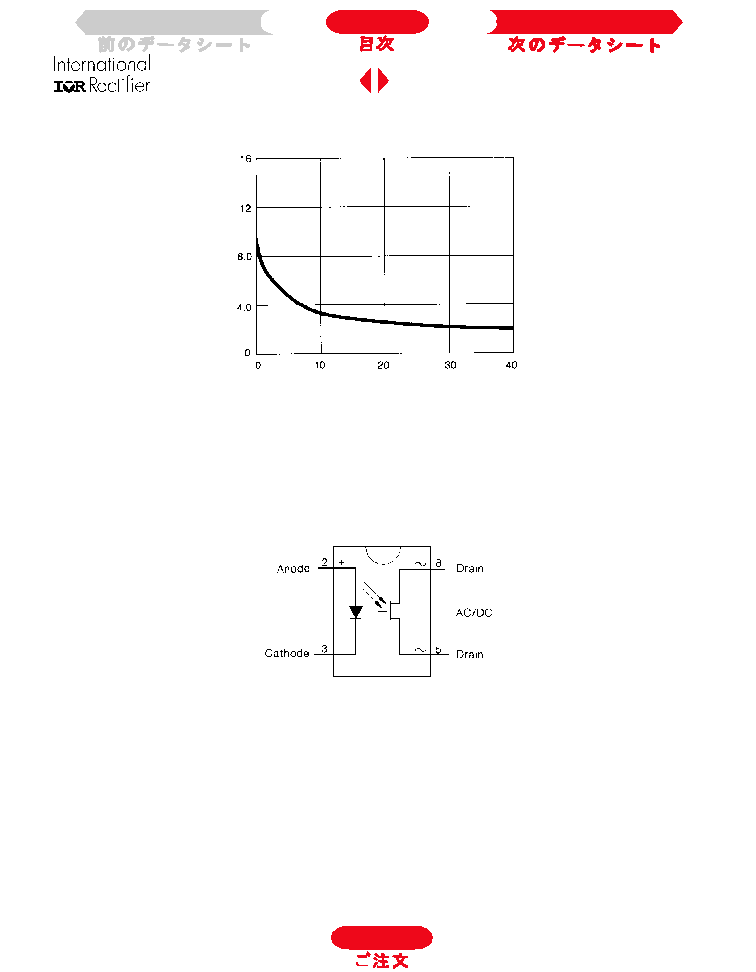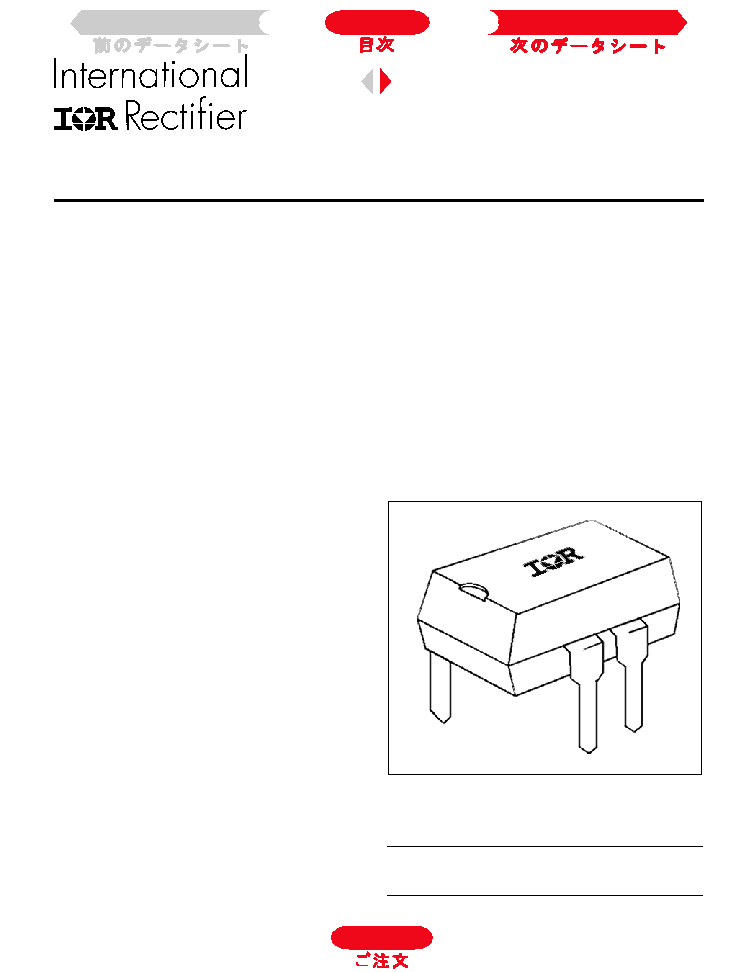
PD 1.030D
Series PVA30
Microelectronic
Power IC Relay
Single-Pole, 40mA, 0-300V AC/DC
BOSFET
®
Photovoltaic Relay
General Description
The Photovoltaic AC Relay (PVA) is a single-pole, nor-
mally open solid state replacement for electro-mechanical
relays used for general purpose switching of analog sig-
nals. It utilizes as an output switch a unique bidirectional
(AC or DC) MOSFET power IC termed a BOSFET. The
BOSFET is controlled by a photovoltaic generator of novel
construction, which is energized by radiation from a di-
electrically isolated light emitting diode (LED).
The PVA30 series combines very low solid state output
capacitance, very high off-state resistance and very fast
response. These Photovoltaic Relays are designed specifi-
cally to accurately switch low-level signals in high-perfor-
mance instrumentation systems.
The PVA overcomes the limitations of both conventional
and reed electromechanical relays by offering the solid
state advantages of long life, high operating speed, low
pick-up power, bounce-free operation, low thermal volt-
ages and miniaturization. These advantages allow product
improvement and design innovations in many applications
such as process control, multiplexing, telecommunica-
tions, automatic test equipment and data acquisition.
The PVA30 series can switch analog signals from thermo-
couple level to 300 volts peak AC or DC polarity. Signal
frequencies into the RF range are easily controlled and
switching rates up to 25kHz are achievable.
The extremely small thermally generated offset voltages
allow increased measurement accuracies. The critical out-
put semiconductors are completely shielded from the in-
fra-red radiation of the input LED. Therefore, photocurrents
in the output BOSFET are nonexistent and there is not an
output offset resulting from radiation from the input LED
drive.
Unique silicon technology developed by International Rec-
tifier forms the heart of the PVA. The monolithic BOSFET
contains a bidirectional N-channel power MOSFET output
structure. In addition, this power IC chip has input circuitry
for fast turn-off and gate protection functions. This section
of the BOSFET chip utilizes both bipolar and MOS tech-
nology to form NPN transistors, P-channel MOSFETs, re-
sistors, diodes and capacitors.
The photovoltaic generator similarly utilizes a unique Inter-
national Rectifier alloyed multijunction structure. The ex-
cellent current conversion efficiency of this technique re-
sults in the very fast response of the PVA microelectronic
power IC relay.
This advanced semiconductor technology has created a
radically new control device. Designers can now develop
switching systems to new standards of electrical perfor-
mance and mechanical compactness.
PVA30 Features
BOSFET Power IC
s
s
s
s
s
10
10
Operations
s
s
s
s
s
25µsec Operating Time
s
s
s
s
s
Low Output Capacitance
s
s
s
s
s
0.2µVolt Thermal Offset
s
s
s
s
s
Offset Independent of Input Drive
s
s
s
s
s
3 milliwatts Pick-Up Power
s
s
s
s
s
1000V/µsec dv/dt
s
s
s
s
s
Bounce-Free
s
s
s
s
s
8-pin DIP Package
s
s
s
s
s
-40°C to 85°C
s
s
s
s
s
UL recognized
s
s
s
s
s
(BOSFET is a trademark of International Rectifier)
Part Identification
Part Number
Operating
Sensitivity
Off-State
Voltage (AC/DC)
Resistance
PVA3054
10
10
Ohms
0 300V
5 mA
PVA3055
10
11
Ohms
Next Data Sheet
Index
Previous Datasheet
To Order
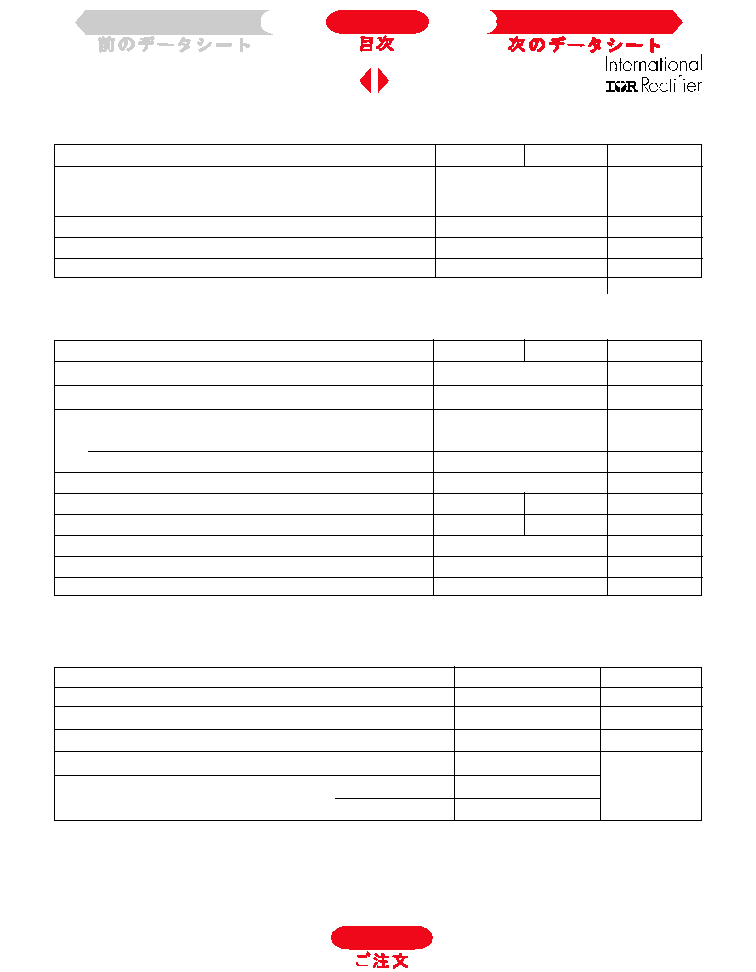
Series PVA30 BOSFET
®
Photovoltaic Relay
OUTPUT CHARACTERISTICS
PVA3054
PVA3055
Units
Operating Voltage Range
0 to ± 300
V
(PEAK)
Maxiumum Load Current 40°C (see figure 1)
40
mA
(DC)
Response Time @25°C (see figures 7 and 8)
Maximum T(on) @ 12mA Control, 20 mA Load, 100 VDC
25
µs
Maximum T(off) @ 12mA Control, 20 mA Load, 100 VDC
15
µs
Max. On-state Resistance 25°C
(Pulsed) (fig. 4) 10 mA Load, 5mA Control
160
Minimum Off-state Resistance 25°C @ 240 VDC
10
10
10
11
Maximum Off-state Leakage 25°C @ 5.0 VDC (see figure 5)
--
0.05
nA
Maximum Thermal Offset Voltage @ 5.0mA Control V
O(OS)
0.2
µvolts
Minimum Off-State dv/dt
1000
V/µs
Maximum Output Capacitance (see figure 9)
3.0
pF @ 40VDC
INPUT CHARACTERISTICS
PVA3054
PVA3055
Units
Minimum Control Current
(see figure 1)
DC
For 40mA Continuous Load Current
5.0
mA@40°C
For 22mA Continuous Load Current
5.0
mA@60°C
Maximum Control Current for Off-State Resistance at 25°C
10
µA(DC)
Control Current Range (Caution: current limit input LED. See figure 6)
2.0 to 25
mA(DC)
Maximum Reverse Voltage
7.0
V(DC)
Electrical Specifications (-40
°
C
T
A
+85
°
C unless otherwise specified
)
GENERAL CHARACTERISTICS (PVA3054 and PVA3055)
Units
Dielectric Strength: Input-Output
2500
V
RMS
Insulation Resistance: Input-Output @ 90V
DC
10
12
@ 25°C - 50% RH
Maximum Capacitance: Input-Output
1.0
pF
Max. Pin Soldering Temperature
(1.6mm below seating plane, 10 seconds max.)
+260
Ambient Temperature Range:
Operating
-40 to +85
°
C
Storage
-40 to +100
Next Data Sheet
Index
Previous Datasheet
To Order
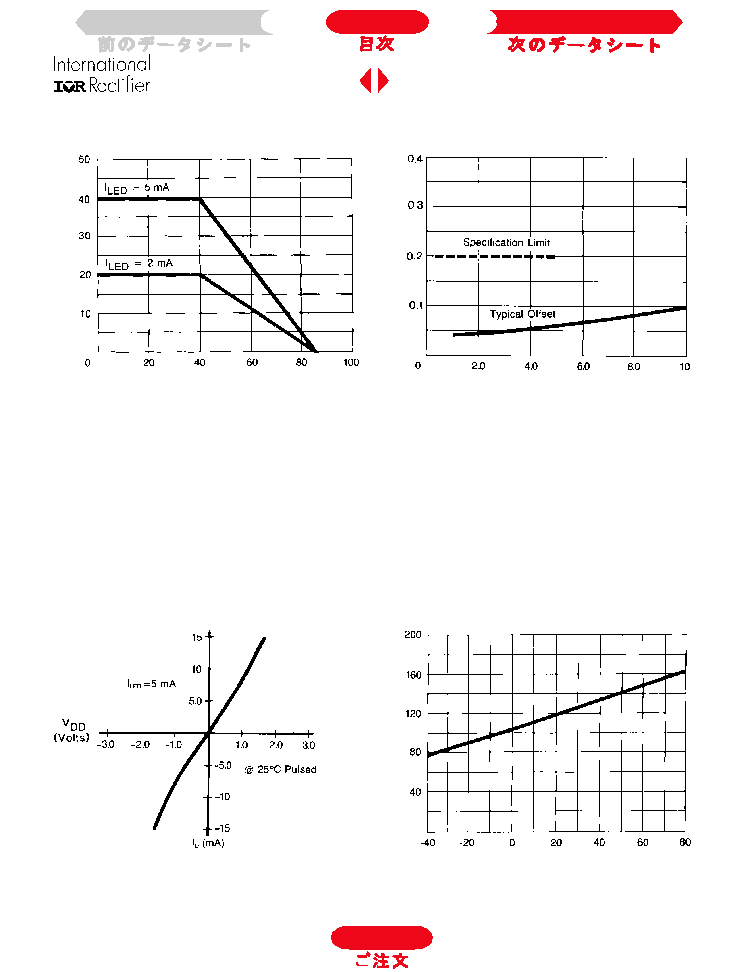
Series PVA30 BOSFET
®
Photovoltaic Relay
Max. Load Current (mA)
Figure 1. Current Derating Curves
Figure 2. Offset Voltage
Figure 3.Typical On Characteristics
Figure 4. Typical On-Resistance
R
DD(on)
(Ohms)
Input control Current IF (mA)
Ambient Temperature (°C)
O
f
fset V
oltage (µV
olts)
Ambient Temperature (°C)
To Order
Next Data Sheet
Index
Previous Datasheet
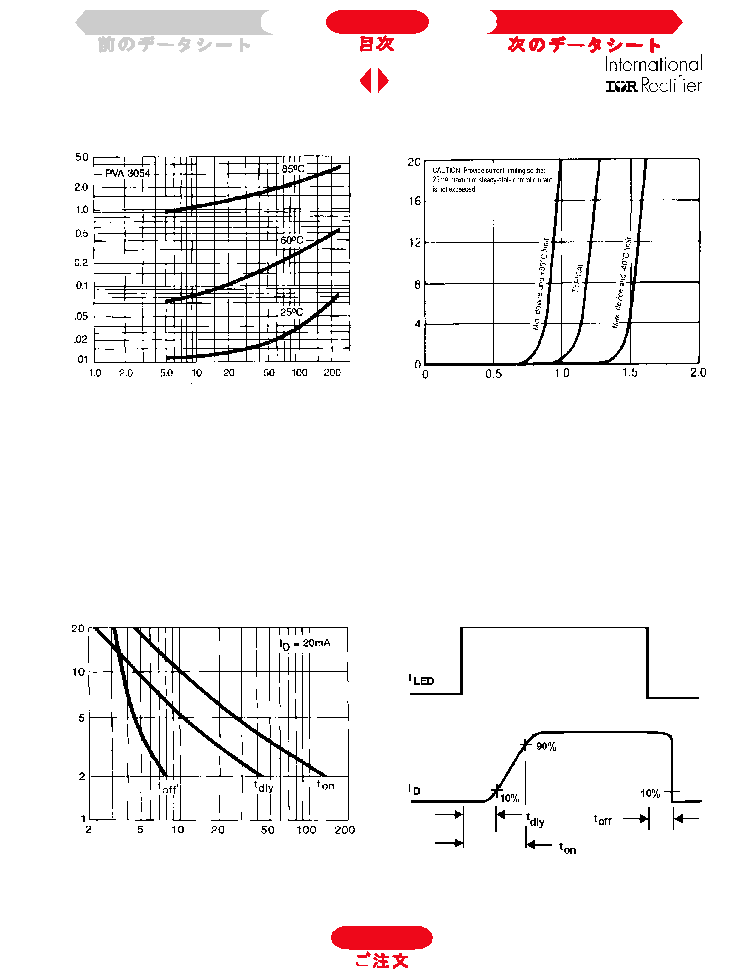
Series PVA30 BOSFET
®
Photovoltaic Relay
Nano-Amperes
Figure 5. Typical Variation of Off-State
Leakage Current
Figure 6. Input Characteristics
(Current Controlled)
Figure 7.Typical Delay Times
Figure 8. Delay Time Definitions
LED Forward Voltage Drop (Volts DC)
Input Current (mA)
Off-State Voltage (V
DD
) Volts
I LED
(mA)
Delay Time (microseconds)
To Order
Next Data Sheet
Index
Previous Datasheet




